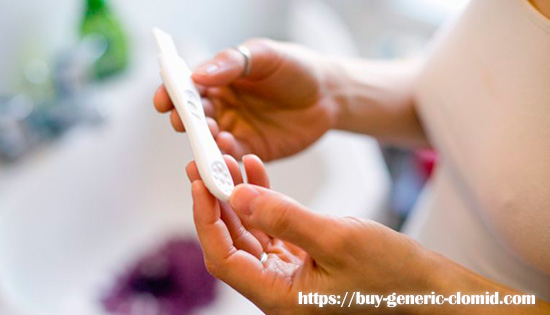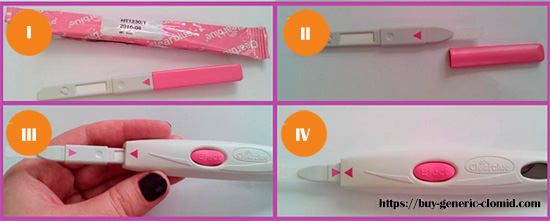All couples who want to have a child know that you can only conceive a child on the day of ovulation. Gynecologists say that ovulation occurs in the female body from about 12 to 16 days of the cycle. However, due to some reasons (stress, climate change, hormonal failures, etc.), ovulation may shift for several days, and occur at the beginning of the cycle, or at the end of the cycle. In addition, the time of follicle development may differ not only in several different women, but even in the same one — in different cycles. This is confirmed by the planning moms themselves, who determine ovulation by tests over several cycles. So how do you determine the right day for conception, how do ovulation tests work? Now we will talk about this in detail.
How ovulation tests work
Each menstrual cycle, a woman Matures one, two or more follicles in the ovaries. As the follicle Matures, female hormones called estrogens are produced in the cells of the follicle. The larger the follicle becomes, the more estrogen its cells produce. The high content of estrogen stimulates a sharp increase in the content of luteinizing hormone, which causes the egg to literally break through the ovarian wall within one to two days after a sharp rise in its level. When the level of these estrogens reaches a level that will be sufficient for ovulation, luteinizing hormone (abbreviated as LH) is released. A small amount of LH is always present in the urine, but 24-36 hours before ovulation (the release of an egg from the ovary), its concentration increases sharply.

To fertilize an egg, sperm must enter the female body at about the same time as the egg leaves the follicle. It may seem that this is easy to achieve, but we must remember that the egg after leaving the follicle lives for only 24 hours, and the sperm remain able to fertilize it for 3-4 days, less often a week. Thus, sex should occur at the appropriate time, i.e. at ovulation, if the couple is planning to conceive. Without tests, this can sometimes be difficult to achieve.
What day should I start testing?
This day depends on the duration of the menstrual cycle. The first day of the cycle is considered the day when menstruation began. Cycle length — the number of days that have passed from the first day of the last menstruation to the first day of the next. If you have a constant cycle, it is better to start doing tests 17 days before the start of the next menstruation. For example, if your normal cycle length is 34 days, then you should start testing from day 18.
If the normal length of your cycle is 28 days, then you should start testing on the 11th day. If your cycle duration is different, select the shortest cycle for the last 6 months and use its duration to calculate the day when to start testing. To start testing, it is not superfluous to visit an ultrasound, after which, after making sure that the follicle has reached 18-20 mm, you can start testing every day. For convenience, ovulation tests are not sold in a single version, but in the amount of 5, 7 or 10 pieces. For accurate results, it is better to use tests 2 times a day (morning and evening).
When is the best time to use an ovulation test?
The best time for testing is from 10 am to 8 PM, this is the time when LH is produced, so you should stick to this time of the test. At the same time, you should refrain from urinating for at least 3 hours before the test. Avoid excessive fluid intake before starting testing, as this may lead to a decrease in the concentration of LH in the urine and reduce the reliability of the result.
How to perform an ovulation test correctly?
If you are using a digital ovulation test, remove it from the packaging, remove the cap, and place the tip of the test strip in the device module, following the arrows. If everything is done correctly, you will hear a click, and a ready indicator will appear on the test.

It is not recommended to perform the test until it lights up. Collect the urine in a jar and immerse the absorbent end of the test in the urine for 15 seconds. Place the receiver on a flat, dry, clean horizontal surface. Wait 4-5 minutes. The ready symbol will start flashing on the device, and you can see the result on the display in a few minutes.
If you use a test strip, then you need to open the bag, get the strip and lower it into a pre-prepared container with urine. The test strip should be lowered for 10-20 seconds to the specified “Max” mark. Next, the test strip should be placed on a flat surface. The result should be evaluated at room temperature in 5 minutes, but not later than 10 minutes after the start of the procedure. The test strip is only used for one-time use.
Digital ovulation test results
To determine the exact result, compare the color intensity (lighter or darker) of the test strip with the control strip. The digital ovulation test is convenient for recognizing the result, which can be one of three and is indicated on the screen.
An empty circle indicates that there is no LH release yet, or its presence is insignificant and you need to continue monitoring the surge using tests.
Smiley-indicates the highest PH value. The cell is already on its way or about to be released. Sexual acts can be safely planned for this and the next day.
The results of the test strips for ovulation
First, it is important to determine which line on the test is the control line and which is the test line. The control card always appears, regardless of the presence of ovulation, it shows that the test is correct and the test was performed correctly. The test line (second) indicates the presence of LH in the urine.
Look at the test, if there is a second pale bar — the test is negative, the release of LH has not yet occurred, and testing needs to continue. If, after testing correctly for several days, you have not found the second bright stripe, then the cycle is anovulatory. There are several reasons for this: stressful situations, sudden climate change, the use of powerful medications, the postpartum period, breast-feeding, premenopause, active physical activity, etc.
A positive test is a bright stripe the same as the control one or even brighter. A positive test means that you will ovulate within 24-36 hours.
The most appropriate time for conception begins from the moment when You have determined that the release of LH has already occurred. In this case, the release of LH occurred on the 15th day of the cycle and if sexual intercourse occurs in the next two days, the chance of getting pregnant will be maximum. Once you have determined that the release of LH has already occurred, there is no need to continue testing, the tests will start to fade.
Thanks for one’s marvelous posting! I quite enjoyed reading it,
you happen to be a great author. I will be sure to bookmark your blog and will eventually come
back down the road. I want to encourage that you continue
your great work, have a nice evening!